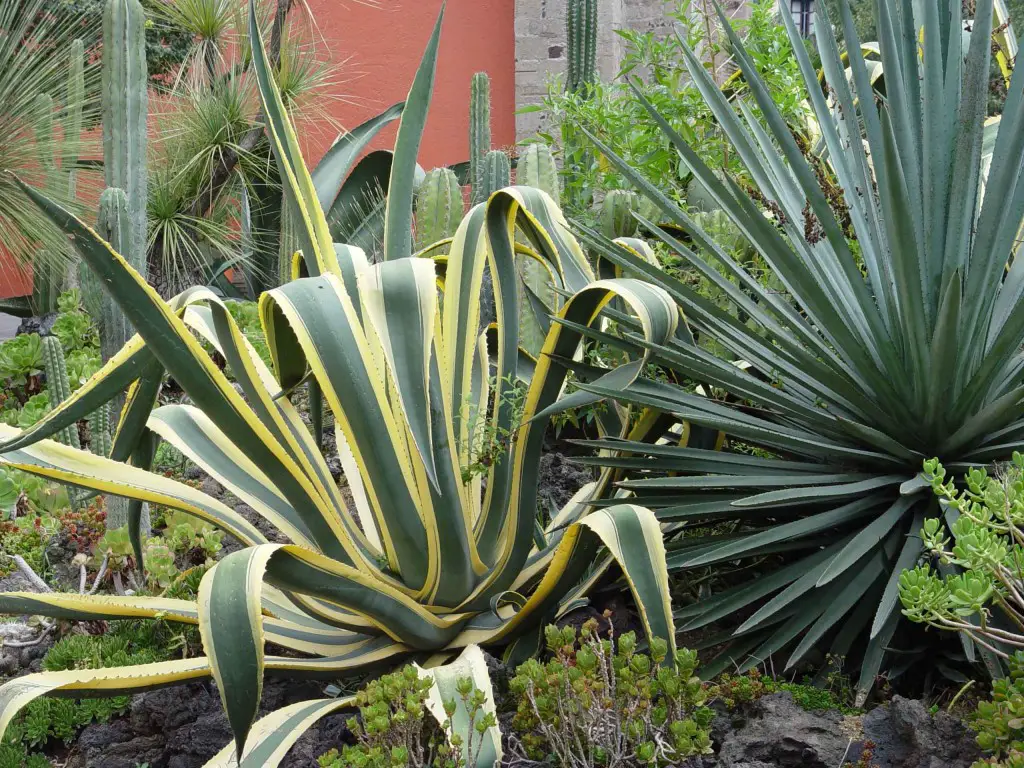For many people, their greatest achievements come at the end of life when they have gained great wisdom and experience. This too is so with agaves, those extraordinarily tough succulents unique to our new world deserts. Among them is locally native Agave deserti, with its twisted rosettes of blue leaves that contain a vital source of strong, yet soft fiber harvested a century ago by Cahuilla weavers.
Newcomers to desert gardening discover their beautifully blooming plant cannot be coaxed to live after flowers fade. This is because agaves bloom but once in their lifetime in a spectacular effort to reproduce itself both by seed, and by cloning itself vegetatively just before death.
The entire life span of an agave serves just one purpose: to store enough energy to produce an enormous flower spike. Those grown for the manufacture of tequila are harvested just before the flowers form, when sugar content is highest to enhance the fermentation process.
Some species produce branching spikes with tufts of bright yellow flower clusters at the tips. Others are a single stalk sheathed in flowers. It’s believed the highly held flowers allow their scent to lure pollinators over long distances across a barren desert. Another reason for agave’s very tall spikes is bats, which relish the nectar. Eco location makes it dangerous when agaves are in a habitat filled with many other spiny or thorny plants. But with flowers high above the spines, bats easily find and feed upon the nectar, thus ensuring pollination.
Each species of agave grows for a certain time span needed to accumulate these sugars. The average is about 25 years, but some may live far longer. Problems arise with short lived agaves because they may not last long enough to use in outdoor landscaping.
One of our most commonly used species is dark green, vase-shaped Agave desmettiana. It is the best example of many ways agaves reproduce to sustain the species in difficult climates. After the bloom stalk sheds its flowers, small perfect plants called bulbils form where blooms detach. They are the back-up plan for reproduction because conditions are so dry that it’s rare for some agave to grow from seed in the wild. These bulbils are genetic clones of the mother plant, and when they get large enough they detach in the wind and fall, littering the ground around the mother. Here they’ll root and grow to maturity unless gathered by an intrepid gardener.
This bulbil production is only found in a few species, which coincidentally include our low desert tolerant Agave vilmorniana and Agave angustifolia. When an agave is old enough to bloom it will do so in spring.
My first bulbils were found in the parking lot where they littered the pavement beneath a blooming mother plant. I rescued as many as I could, stuffing them into my purse to take home to plant in the sand and shade of my irrigated garden. They were tucked into natural soil in such a dense patch they looked like an agave lawn that first year.
Soon these freebie bulbils grew large enough to move around the garden. Once transplanted to their own individual location, each began to offset around their bases. This is yet another means of vegetative reproduction found in arid zone succulents. These are small plantlets generated by the stem at or below ground can be cut away from the rosette to root into yet another new plant at any time of year. Technically Agave desmettiana lives for just ten years, which is a very short lifetime, but it’s compensated by aggressive offsetting which carries on as a group after the mother plant dies.
Those I found in the parking lot grew to maturity, bloomed and died in my garden within eight short years. This demonstrated to me that agaves started from bulbils may not enjoy the maximum life span of the species. It was also disappointing to find them blooming so soon, just when they’d achieved their greatest size and beauty.
Now is the time to keep an eye on agaves to spot bright yellow blooming plants that stand out. Make a mental note to return to them later in spring or early summer to check for bulbils. Sometimes the bulbils are so dense that their accumulative weight can pull the entire plant over. This is another way bulbils reach the ground to root.
Life is a process of gathering, for us it’s knowledge and wisdom, for agave it’s energy consumed in a single final reproductive event. It can be marked by a grand funeral procession, celebrities and dignitaries, or it may end whisper quiet on a cliff above the Coachella valley. Either way, there are offspring and relatives who remain behind, their lives directly tied to a single, pivotal individual, and the gift of life they leave behind.

